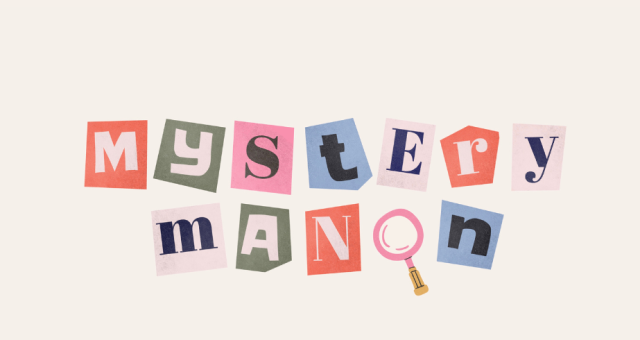Today’s featured author is Nekesa Afia. Nekesa’s debut, Dead Dead Girls (Berkley, 2021) got my attention last year with its glitzy 1920s Harlem setting and fiery protagonist. Its sequel, Harlem Sunset, is on shelves as of June 28th.
Read along for my interview with Nekesa, in which we chat mysteries, book recs, and the Roaring Twenties.
Connect with Nekesa on Instagram, Goodreads, and her website. Grab a copy of Harlem Sunset from your favorite retailers here.

Hi Nekesa! Thanks so much for joining. Both your books, Dead Dead Girls and Harlem Sunset, are set in 1920s New York City. What kind of research did you do while writing, and/or is there a reason you picked this time period? If you were to put Louise Lloyd in another time period, what would it be?
Hi! Thank you for having me.
I picked this time period because it’s been an era I’ve always been fascinated in. I’ve always been interested in history, and there was something about this decade, with the ban on alcohol, and the way it backfired, and how the time was so romanticized in literature. I always say I could have set these books now and barely anything would change. If I had to choose another decade, I think I would go for the swinging sixties, and Lou could wear mini dresses and go-go boots!
I did a ton of research. There are so many things we take for granted-clothing, food, work, travel-that we do every day. I had to figure out what Lou would do and who she would be back in the 1920s. It’s fun research, but she’s a whole person who is ninety-four years older than I am, so the research could be complicated too. Aside from the lifestyle, I also had to figure out how to be a murderer really quickly. I spend a lot of time researching death methods, which is grim.
Your heroine, Louise Lloyd, is a fiery, determined young woman—which makes for fantastic detective. What qualities do you love most about Louise? Were you inspired by any historical or literary figures when crafting her character?
I love Lou! She suffers no fools and I tried to make that evident from the first page. I didn’t base her off anyone in particular, but the greatest thing about my friend group is that I am surrounded by wonderful women who are unique in their own ways. Lou has their confidence, their maternal nature, their love of laughter and dancing. My mother will tell you I based Lou off of myself but that’s not true. She’s way cooler than I am.
Mystery, as a genre, has historically lacked diversity, from its detectives to its victims. Dead Dead Girls and Harlem Sunset center Black and queer experiences, and to see that in the mystery space is exciting and important. What has writing this series meant to you? Why is it important to tell these stories?
I have always loved mysteries. I was always a Nancy Drew girl. But growing up, characters like me were always the side characters, and I never got to see myself as the star. Writing this series has been the greatest gift to child me. I also set these books in a time period that has been so heavily romanticized that people see it was the best time. And the prohibition was great. For straight white men. Even for straight white women. But for any other race or class, it really sucked. So being able to shine a light on a more realistic view of the 1920s has been really great. It has also been horrible to learn about the racism and homophobia and then inject it into my writing. But it’s been necessary.
(Also, maybe this is too much to include in one question, but I’m curious—do you have any book recommendations, especially mystery, for readers looking to diversify their shelves?)
A couple of quick recommendations: My Sweet Girl by Amanda Jayatissa (and scope out her next one: You’re Invited). The Tita Rosie’s Kitchen Mysteries by Mia P. Manasala, starting with Arsenic and Adobo. I think there are two or three books in the Hollywood Homicide series by Kellye Garrett, and her newest, Like A Sister, is centered around Hollywood as well. Naomi Hirahara also writes historical mysteries, her latest is Clark And Division.
But the best place to find crime novels by writers of colour is this database!
Can you share a bit about how you write mystery? Are you an outliner, or do you like to write and see how the mystery unfolds? What does your writing process look like?
My process is a little chaotic. It depends on the story I’m ultimately trying to tell (content dictates form), but I always try to at least have the who, what, when, where, and why of the murder that is at the heart of the story. Then I have to figure out how to get Louise into it, as she will not want to solve the crime. I try to balance the mystery with her life and relationships. I try to write in a linear fashion to keep the story going and I try to write about 1,500 words a day when I’m on deadline.
Lastly, what can we expect from you next? Will Louise return in a third Harlem Renaissance Mystery, and/or do you have other projects in the works?
While I am working on other secret projects, there will be at least two more Harlem Renaissance mysteries! The third sees Lou make a big life change and I’m very excited about it!
Thanks so much to Nekesa for the interview. Sleuths, I hope you enjoyed it! If you aren’t already subscribed, please be sure to sign up for the Cluesletter and get author features like this alongside other mystery goodies, delivered to your inbox every other Tuesday.

Leave a Reply